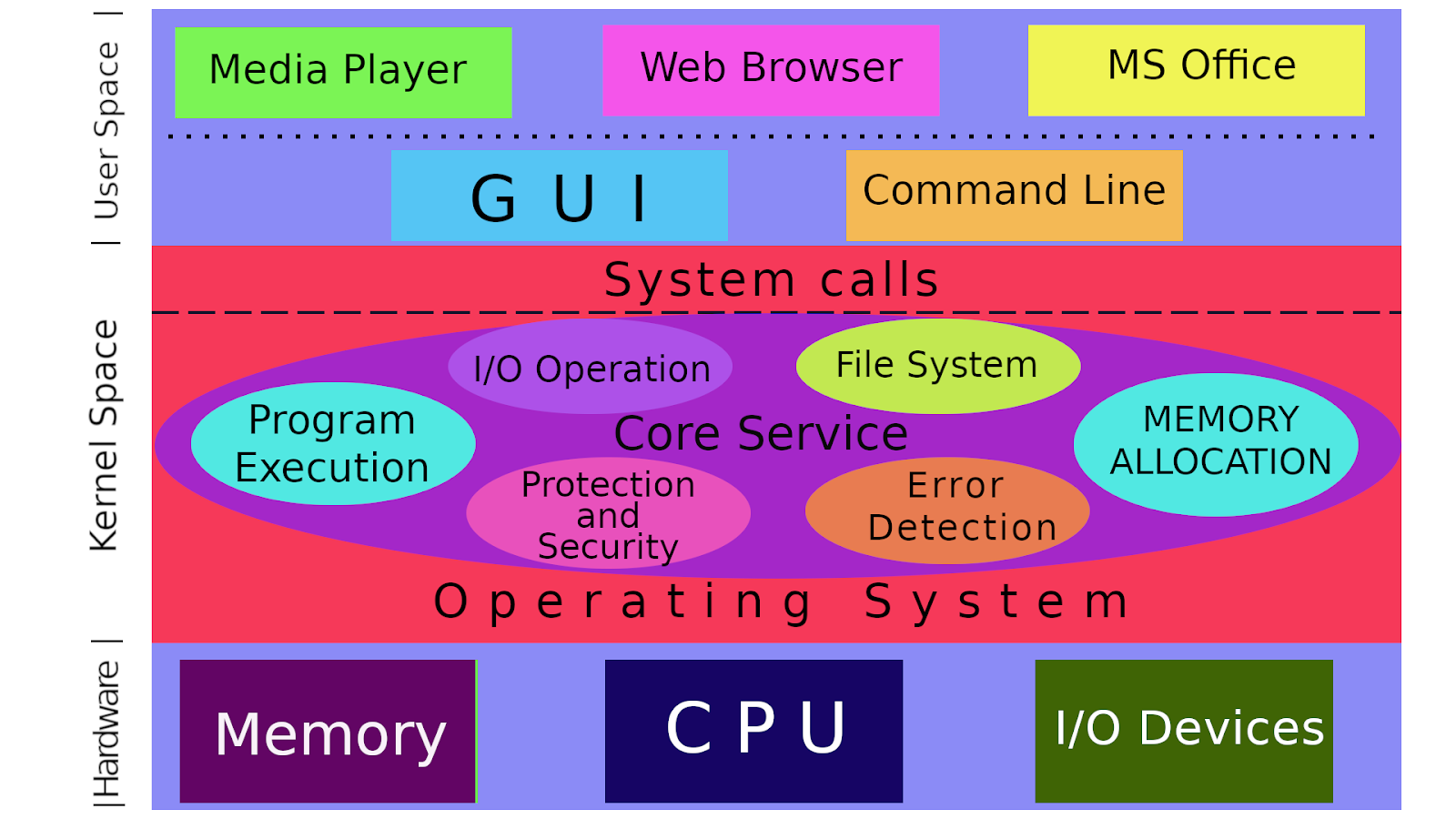| The figure shows another operating system architecture, which includes (i) program execution, (ii) I/O operation, (iii) file system, (iv) memory allocation, (v) error detection, and (vi) protection and security. |

|
- Process management: A process is a program in execution. The OS must allocate resources to processes, enable processes to share and exchange information, protect the resources of each process from other processes, and enable synchronization among processes.
- Process synchronization: It is the coordination of execution of multiple processes in a multi-process system to ensure that they access shared resources in a controlled and predictable manner.
- Memory management: It is responsible for managing the computer’s primary memory including registers, cache, and RAM like keeping track of the status of each memory location, either allocated or free.
- CPU scheduling: It is a process of determining which process will own the CPU for execution while another process is on hold or in waiting state.
- File management: A file system is a method an operating system uses to store, organize, and manage files. File management manipulates files in a computer system, which includes creating, modifying, and deleting files.
- Security: It is to ensure OS integrity, confidentiality, and availability. OS security refers to specified steps or measures used to protect the OS from threats, viruses, worms, malware or remote hacker intrusions.